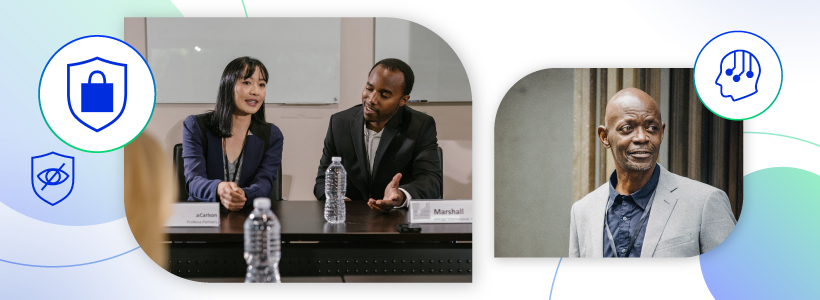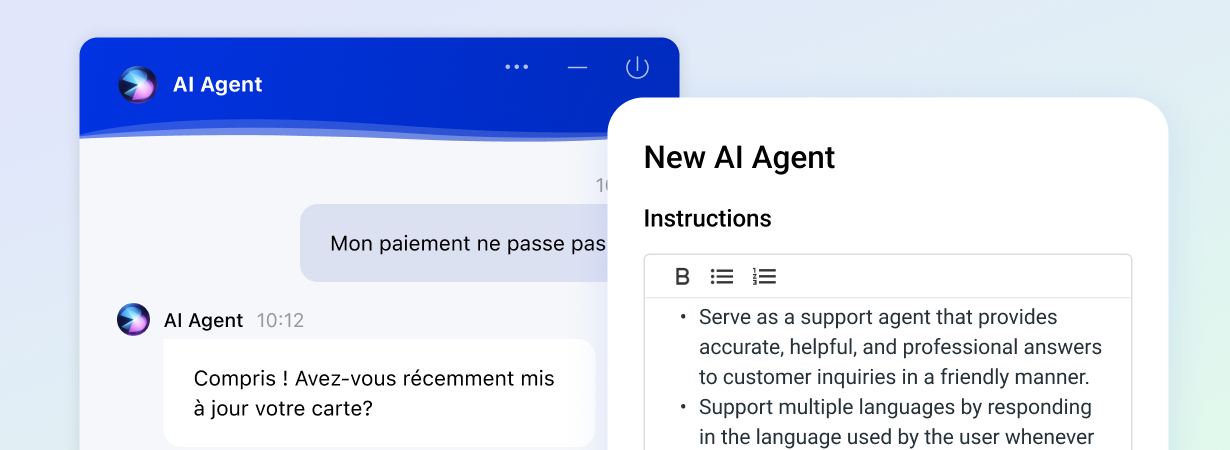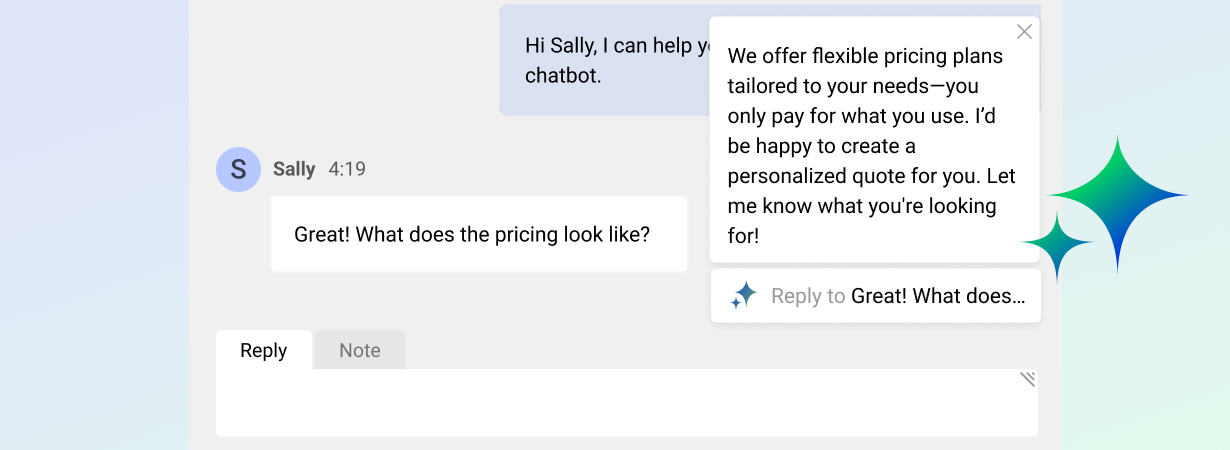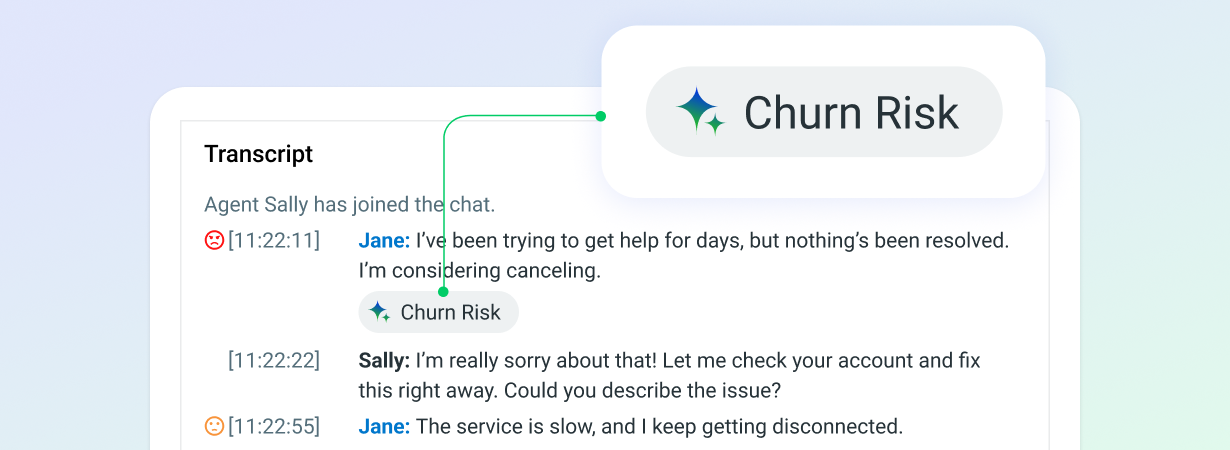By 2025 the chatbot industry is expected to be worth $1.25 billion, growing at a CAGR of 24.3%, according to a new report by Grand View Research.
While some brands were initially hesitant to get onboard, thanks to tech advancements, these chatbot fears are being put to bed. And it’s no surprise – with up to 91% of chatbot chats resolved without human involvement, chatbot benefits are evident. Let’s dig into the key factors that are driving this growth and why top brands are embracing AI chatbots.
1. Evolution of AI
When customer service chatbots first came to the market, complaints were abundant – so much so that ‘chatbot fails’ became a common term that still lingers on today. These complaints largely stemmed from the fact that the chatbot couldn’t ‘speak human’. It couldn’t understand the true meaning and intent of a human conversation, and unsurprisingly, this led to a frustrating and unsatisfactory experience for the end user.
However, since then chatbot vendors have made great strides in the development of this technology, driven by AI and most specifically, Natural Language Processing (NLP). NLP is a branch of AI that simply put, helps computers communicate with humans. It’s the essential ingredient to produce intelligent, human-like conversations. By harnessing NLP, a chatbot can understand the customer, identify what their goal is, and take the right action to resolve the query.
“
The ability to appear human and deal with more human conversations has undergone a massive step change in the last 24 months, in terms of the intelligence and the machine learning that sits behind the chatbot. It’s allowing brands and services to create an interface that feels human and interacts in a way that people expect to be spoken to and dealt with.”
– Howard Pull, MullenLowe Profero in Information Age
Take Tangerine, an Australian telecom company, that implemented Comm100 AI Chatbot in 2020. With an advanced NLP engine and the ability to understand the intent behind the visitor’s question, the chatbot resolves 91% of assigned chats – without any human agent involvement. It’s use cases like this that are proving the effectiveness of AI Chatbots.
Read the full story: Comm100 Chatbot Resolves 91% of Assigned Live Chats for Tangerine
2. Consumer appetite
Because of these improvements in technology, there is an ever-growing consumer acceptance, and even appetite, for chatbots in customer service.
“
45% of end users prefer chatbots as the primary mode of customer service communication.” (Grand View Research) According to Salesforce, 69% of consumers prefer to use chatbots than speak with an agent. The key reason for this is simple. Above all else, consumers want fast answers to their questions. They don’t mind if they are being served by a chatbot or an agent – so long as their issue is resolved quickly.
Consumers also want to get the answer to their question whenever it suits them, no matter the time or day. Chatbots can provide this 24/7 support when agents are offline. 64% of consumers claim that 24/7 service is the most useful chatbot functionality. Speed and availability are the most important factors for today’s consumer, and the self-serve, always-on nature of AI chatbots provides this experience.
And this mentality isn’t just shared by younger demographics, as is often wrongly assumed. A recent study found that 49% of those aged 33-40 prefer using chatbots as their communication channel when shopping online, and 44% of 45-60 year olds.
3. Efficiency that doesn’t harm quality of service
Customer experience (CX) is far more than just another acronym or industry buzzword – it has been proven to have measurable benefits on the bottom line, and brands are investing heavily into it.
The debate around whether AI chatbots damage customer experience rages on, but the true answer is, it depends entirely on the specific chatbot and how it’s being trained and used. AI chatbots that are well-built and serve a clear purpose to the customer don’t damage CX. In fact, they can improve it. Here’s how.
For most customer service teams, a large portion of incoming queries will be simple, common questions like; ‘How do I change my password’ or ‘What time does the store close’. While every query is important, these common queries are typically of lower value, while taking up a lot of agent time.
Once these questions have been identified, they can be directly routed to the chatbot once a few basic questions have been answered in a pre-chat survey. And because the questions are typically straight-forward, the chatbot will rarely need to escalate the issue to an agent and can resolve the query without any human involvement. Tangerine, an Australian network provider, set up Comm100 AI Chatbot to deal with a surge in live chat queries. Its chatbot resolves up to 91% of chats without agent involvement, saving Tangerine from having to hire more agents to manage the increase in chat volume.
“
The bot has allowed us to not only effectively manage the increase in chat volume, but it has also saved us a considerable amount of money by not having to hire a lot more agents.”
– Richard Branson, COO at Tangerine
Read the full story here: Comm100 Chatbot Resolves 91% of Assigned Live Chats for Tangerine
However, for some companies, reducing headcount isn’t the major reason for implementing a chatbot. Instead, they employ chatbots as a way to improve customer experience. Canadian Blood Services (CBS) is a perfect example of this. CBS recognized that much of their agents’ time was being spent on simple queries, giving them less time to focus on the more sensitive or complicated questions. By setting up Comm100 AI Chatbot, the former are now handled by the chatbot, giving the agents more time to focus on the latter and so provide more meaningful and helpful conversations to the donors who need it.
“
For us, the chatbot wasn’t launched to reduce agent headcount. It was launched so our agents can spend less time on simple queries, and more on the complicated and high-value queries… the last thing that we want to see are rushed conversations that could come across like we don’t care. It’s thanks to Comm100 Chatbot that we can give more time and care to our donors.”
– Denny Michaud, Customer Relations Manager at Canadian Blood Services
Read the full story here: Canadian Blood Services Improves Customer & Agent Experience with Comm100 AI Chatbot – Pt. 2
It’s also worth noting that AI chatbots improve customer experience by reducing wait time and queue length for those visitors who want to speak to an agent. After ASEBP, a Canadian Health Insurer for Alberta’s public education sector, implemented Comm100 AI Chatbot, service wait time dropped from 24 seconds to just 14 seconds.
Wrap-up
Organizations of every size and stripe across the world are turning to AI chatbots, but no matter how intelligent and helpful these chatbots are, they won’t ever replace whole teams. While agents clearly benefit from the support of chatbots, chatbots still need agent support for the ‘human touch’ that will always remain vital to customer service. When implemented well, AI chatbots can resolve large portions of customer queries, allowing human teams to take customer experience up a level.
The AI Agent That Talks Like You
Automate over 80% of all inquiries. Launch in 1 day. Powered by the latest GPT and vast LLMs.
Discover more
Solution






